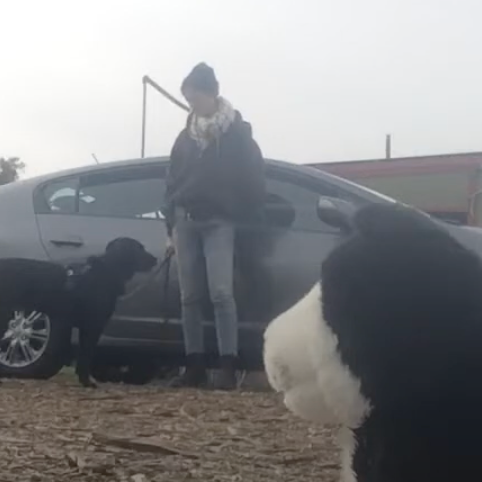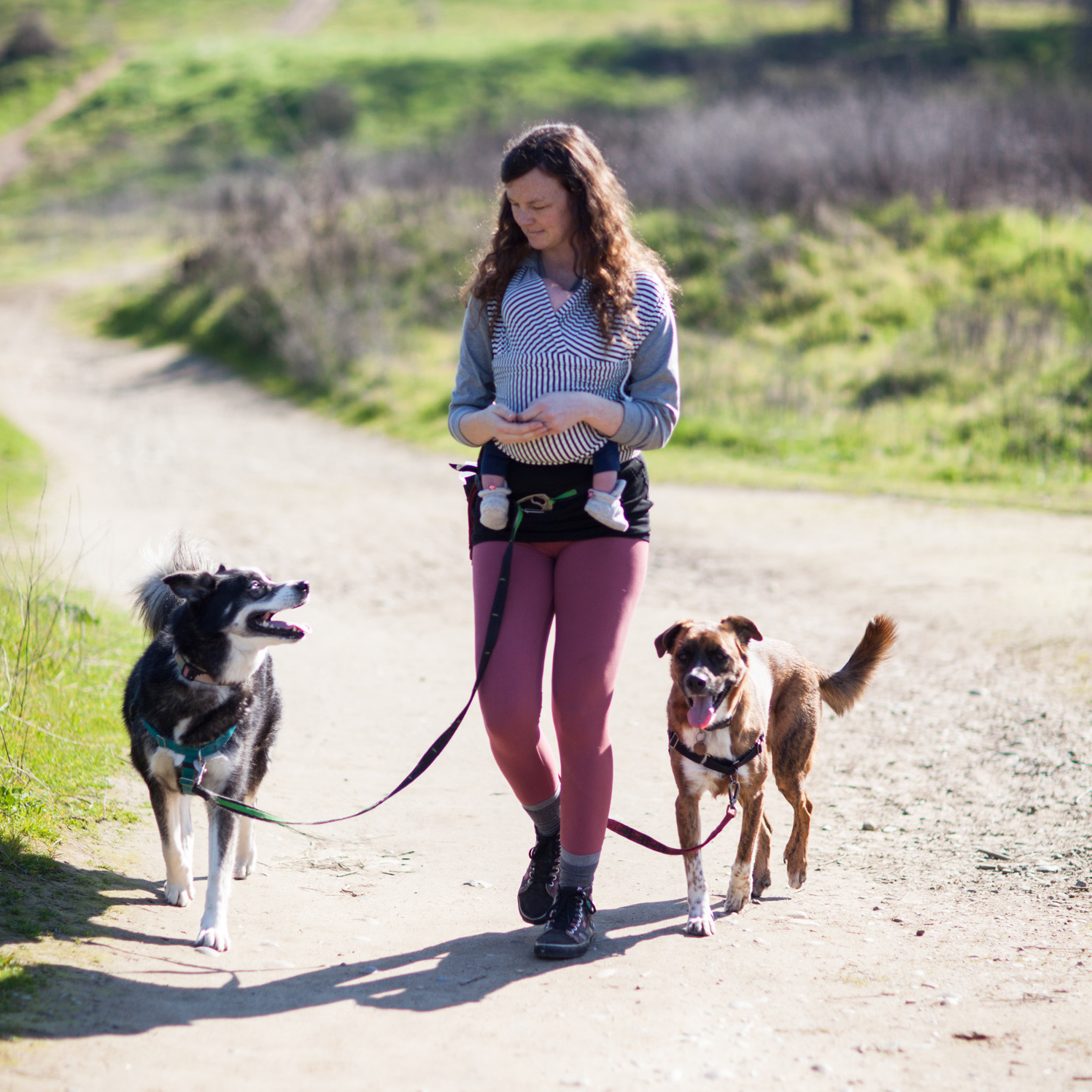Does your dog have a history of offering eye contact to you? It's a super useful behavior to teach as a reliable skill you can build on in a range of situations.
This behavior, often referred to as an “auto watch” or a “check-in” is a great foundation skill for all dogs, but is especially useful if you're working with your reactive or nervous dog to stay connected and calm.
We’ll get into how to use this skill around triggers next, but first let’s talk about how to begin teaching this calming, redirecting response that's a wonderful communication bond to have with your dog.
Your Dog's Plan
Stop! Don't read this long article. Instead, get everything you need to know, including all advice on Reactivity Training, in a customizable step-by-step plan for your dog created by our community of certified trainers and nutritionists.
How to teach your dog eye contact and check-in skills
1) Start in a quiet, relatively distraction free environment as we generally do when teaching a new skill.
Make sure your treats aren’t too visible as well.
2) Then simply stand, looking at your dog, and waiting for any glance at your face.
When your dog makes eye contact, no matter how fleeting (we're not looking for prolonged eye contact or a dog stare), mark with a clicker or verbal marker (yes!), and reinforce with treats.
3) Initially, you’ll want to offer the food directly in front of you.
When your dog's eyes start homing in on your face with laser focus and more intense eye contact, you can begin tossing the treat away from you after the mark/click - this provides a little bit more a challenge as your dog will have to more clearly break eye contact then reorient to focus back to making direct eye contact with you.
4) Once this exercise is easy in the quiet location, start expanding your locations to practice the behavior in more distracting locations.
Practice in different rooms in your home, then begin to work on it outside - in the backyard, then at the front door during quiet times.
You can enlist the help of other members of your household to be “distractions,” starting with relatively easy things like just walking through the room quietly, and increasing difficulty by adding in more movement/noise, etc.
For more on how to build distraction into your behaviors, check out this guide I shared on "The Three D's: Distraction. "
Take your time with this, and really get comfortable practicing around a variety of different non-triggering distractions before you bring your dog’s triggers into the picture.
Pro tip: Once you’re ready to work with your dog’s triggers, first and foremost make sure you have some sense of control over the distance and intensity so you’re able to keep your dog under threshold.
Reactivity Training
Interested in Reactivity Training? Follow topics you're interested in to customize your dog’s step-by-step plan so it's most helpful and tailored to your dog when you're ready to get started.
What "under threshold" actually means in practice
Keeping control of the distance/intensity to keep your dog under threshold may mean enlisting a helper to be your “scary stranger” or to be your “scary unfamiliar dog.”
I often use a stuffed dog when working with in-person training clients and their own dog. This helps me ensure that the distraction dog never does anything unpredictable such as when a dog stares, lurches, barks, etc, any body language that may set off a sensitive dog or make a nervous dog hostile, or appear hostile out of fear, during a session.
Where your counter-conditioning comes in
If you have already set up a foundation of counter-conditioning - covered in my guide on counter-conditioning in case you missed it - then this transition should go smoothly. The counter-conditioning process should have produced a conditioned emotional response (CER), which generally looks like the dog perceiving the trigger, and then turning to his or her human to check in about that delicious piece of food that is bound to be arriving any second (remember, counter-conditioning turns the trigger into a predictor of food).
Tell me more
Now at this point, we want to simply mark that moment of direct eye contact, as we’ve been practicing with the auto-watch, and reinforcing. So, almost the exact same process, but we’re switching to marking behavior (your dog's eye contact) instead of just pairing food with the presence of the trigger. Remember even a fleeting eye contact or connection is what you're looking for to reinforce immediately with rewards of marker, praise, and treats. No need for your dog to maintain eye contact for a period of time to qualify as a check-in.
5) If your dog shows any signs of stress, or ends up reacting, give your pup some space, take a break, or end the session if needed, and then regroup.
Stress signals and reactions are good information that you’re moving too fast or too close to the trigger. Adding distance or breaking to start fresh another time, another day is always a good option.
Baby steps are best to have early wins & experience success
Remember, baby steps are always better than big leaps when it comes to training around fears and anxieties. You want your dog to be successful as much as possible so your pup will continue to offer the behavior you’re looking for, and not get overwhelmed and react.
Never punish a dog for reacting
It’s our job to keep our dogs safe and comfortable, and adding more scariness to a stressful situation is only going to exacerbate our dogs' big feelings. The more we show our dogs that they can look to us in these moments of uncertainty, and that we won’t put them in situations that they aren’t ready for, the more their trust and confidence will grow.
And that’s what it’s all about, right? Helping our dogs to feel good and confident in the world, and trusting in their bond with us.
Reactivity
Need more advice? Browse all guides in the Reactivity Channel on topics like Managing Reactivity, Reactivity Training, Leash Reactivity, and Understanding Reactivity - created by our community of certified experts for you and your dog.
How to help reactive dogs with an eye-contact check in.
Choose how you'd like to view this guide's video.

Next up in the Reactivity Channel on Dogly
Now that you and your pup have solid check-in skills and know how to use them in potentially reactive situations, put them to work as a foundation for more ways to handle reactivity, and check out what's next in Dogly's Reactivity Channel!
If you have any questions on teaching and using check-ins or would like to share your experiences with helping your reactive dog, jump into our Community Discussion. Continue in our Reactivity Channel where you'll learn everything you need to know for your dog from our community of Dogly Training Advocates, each one a force-free, certified professional trainer.
If you ever need more individualized guidance, get started in your dog's training plan here.

